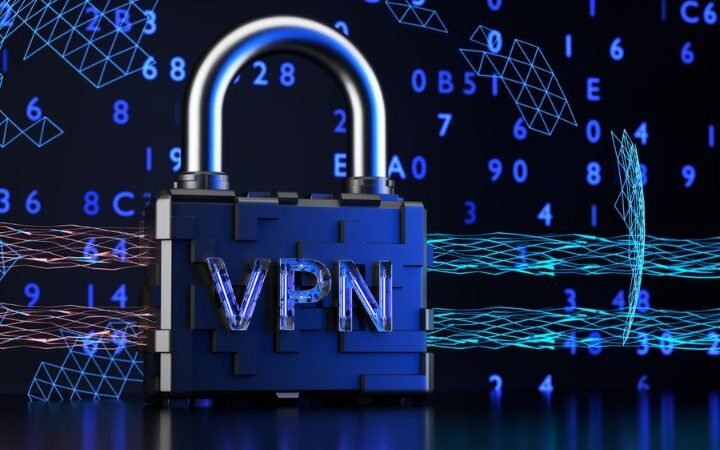How To Take Down Phishing Websites?

Phishing websites are created to steal your personal information, such as your login credentials, credit card information, etc. But there are ways to take these websites down and protect yourself from becoming a victim. Here’s how to do it!
What is Phishing and How Does it Work?
Phishing is a cyberattack that uses malicious emails or websites to trick users into revealing sensitive information, such as login credentials or financial data. The attackers typically pose as a legitimate entity, such as a bank or well-known website, to gain the victim’s trust.
Once the victim has input their information, the attacker can use it to access their accounts or commit fraud.
The Dangers of Phishing
Phishing attacks can have severe consequences for both individuals and organizations.
For individuals, a phishing attack may result in the theft of sensitive information, which can be used to commit fraud or identity theft.
For organizations, a successful phishing attack can lead to data breaches, loss of customer trust, and damage to the company’s reputation.
How to Take Down Phishing Websites
There are a few different ways that you can take down phishing websites:
Reporting the Website to the Hosting Company
One way to take down a phishing website is to report it to the hosting company. This is usually the company that owns the domain name or provides web hosting services for the website. Many hosting companies have a policy of taking down websites involved in phishing scams.
To report a phishing website to a hosting company, you will need to gather information about the website first. This includes the URL of the website, the name of the hosting company, and any other relevant details.
Once you have this information, you can contact the hosting company and let them know about the phishing website. They will then take appropriate action to take the website down.
Reporting the Website to Relevant Authorities
Another way to take down a phishing website is to report it to the relevant authorities. To report a phishing website to the authorities, you will need to gather some information about the website first. This includes the URL of the website, any details about the phishing scam, and any other relevant information.
Once you have this information, you can contact the appropriate authorities to let them know about the phishing website. They will then take appropriate action to investigate and shut down the website.
Using Anti-Phishing Software to Block the Website
Another way to take down a phishing website is to use advanced phishing takedown service to block the website. This type of software protects users from phishing attacks by blocking access to malicious websites.
There are many different types of anti-phishing software available, so you will need to choose one that is right for you. The most popular options include Norton AntiVirus, McAfee Internet Security, and Kaspersky Internet Security. Once you have installed the software, it will block access to any phishing websites that you visit.
Educating Yourself and Others About Phishing Scams
The best way to protect yourself from phishing attacks is to educate yourself and others about how they work. By learning about phishing scams, you can learn how to identify them and avoid them. You can also help spread awareness about these scams to others, which can help protect them.
There are many resources available that can help you learn about phishing scams. Some of the most popular options include the Federal Trade Commission’s website and the Anti-Phishing Working Group’s website. These websites provide valuable information about phishing attacks and how to avoid them.
Tips for Staying Safe Online
In addition to taking down phishing websites, there are also some other things that you can do to stay safe online. These include:
Using strong passwords and keeping them confidential:
Creating strong passwords is one of the best things that you can do to protect your online accounts. Your passwords should be at least eight characters long and include a mix of uppercase and lowercase letters, numbers, and symbols. You should also never use the same password for more than one account.
Keeping your software up to date:
Another essential thing that you can do to stay safe online is to keep your software up to date. This includes your operating system, web browser, and any other software. By keeping your software up to date, you can help protect yourself from security vulnerabilities.
Backing up your data:
It’s also important to back up your data regularly. This way, if you ever experience a data loss, you will be able to restore your data from a backup.
Only share personal information on secure websites:
You should only do so on certain websites when sharing personal information online. A secure website will have a URL that starts with https:// and will have a padlock icon next to it.
Monitoring your credit report for suspicious activity:
You should also monitor your credit report for any suspicious activity. If you see anything on your report that you don’t recognize, it could be a sign of identity theft. You can order a free copy of your credit report from each of the three major credit bureaus once per year.
Never click on links or open attachments in emails from unknown senders:
You should never click on links or open attachments in emails from unknown senders. These could be phishing emails that are trying to steal your personal information. If you’re unsure about an email, you can contact the sender to verify it’s legitimate before clicking on any links or opening attachments.
Use a firewall to protect your computer from unauthorized access:
A firewall can help protect your computer from unauthorized access. This is especially important if you have a broadband connection.
Only download files from trusted websites:
You should only download files from trusted websites. Downloading files from untrustworthy websites could result in your computer becoming infected with malware.
Reporting phishing websites:
If you come across a phishing website, you should report it to the proper authorities. This can help get the website taken down and help prevent others from becoming victims.
Use two-factor authentication whenever possible:
Two-factor authentication is an extra layer of security that can help protect your online accounts. With two-factor authentication, you’re required to enter both your password and a code sent to your phone before you can log in. This makes it more difficult for someone to hack into your account.
You can help protect yourself from phishing attacks and other online threats by following these tips.
Conclusion
Phishing websites can be a serious threat to your online security. But there are things that you can do to protect yourself. By taking down phishing websites and following some simple safety tips, you can help keep your personal information safe.
Also Read : The Definition Of Business Process Outsourcing and Its Benefits


